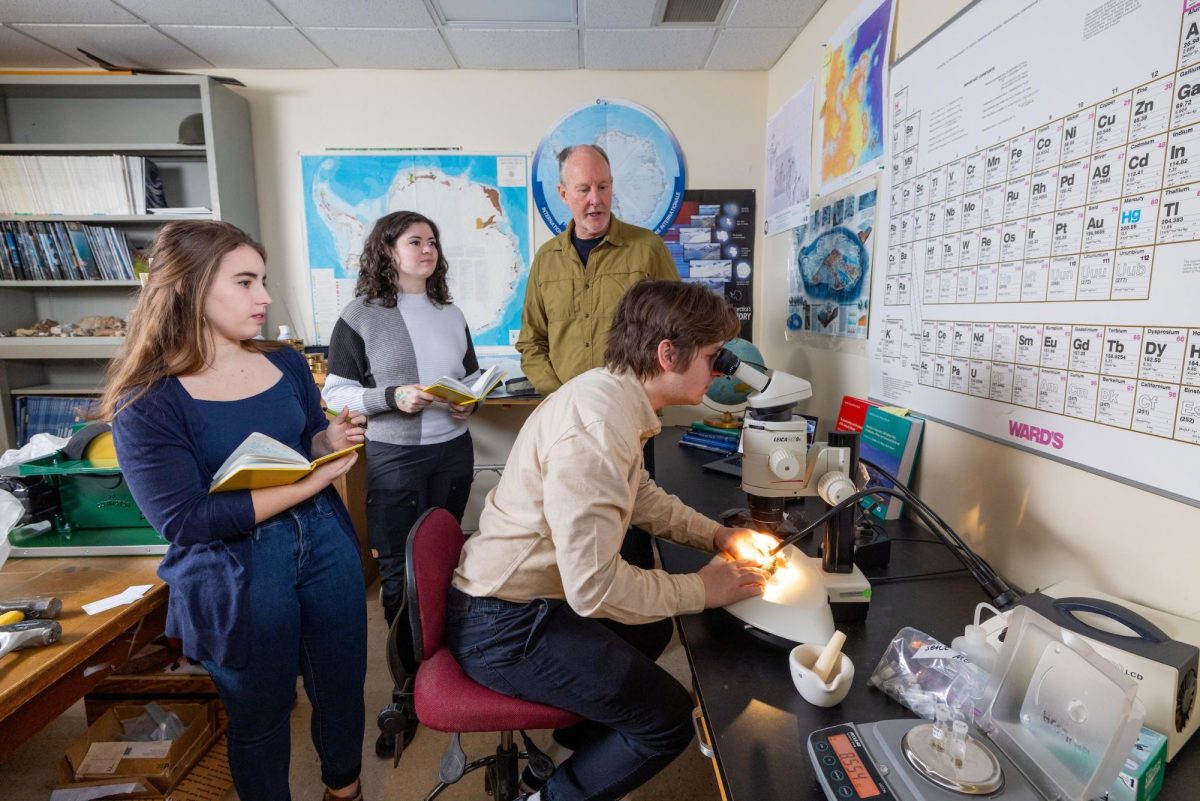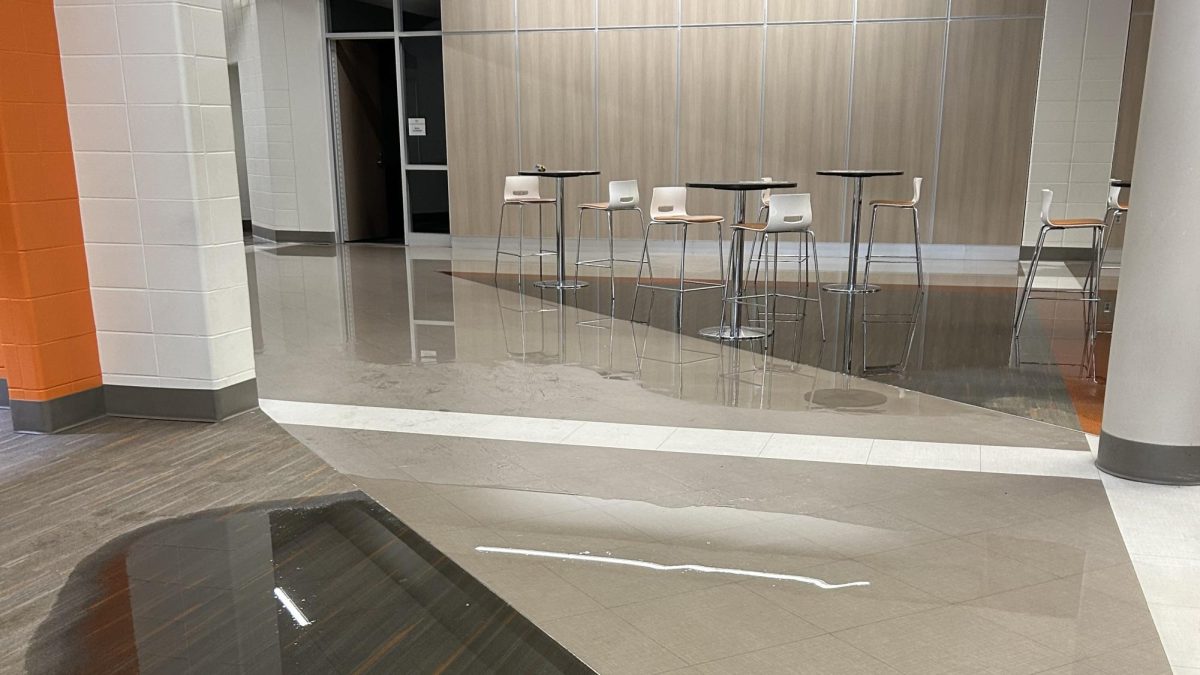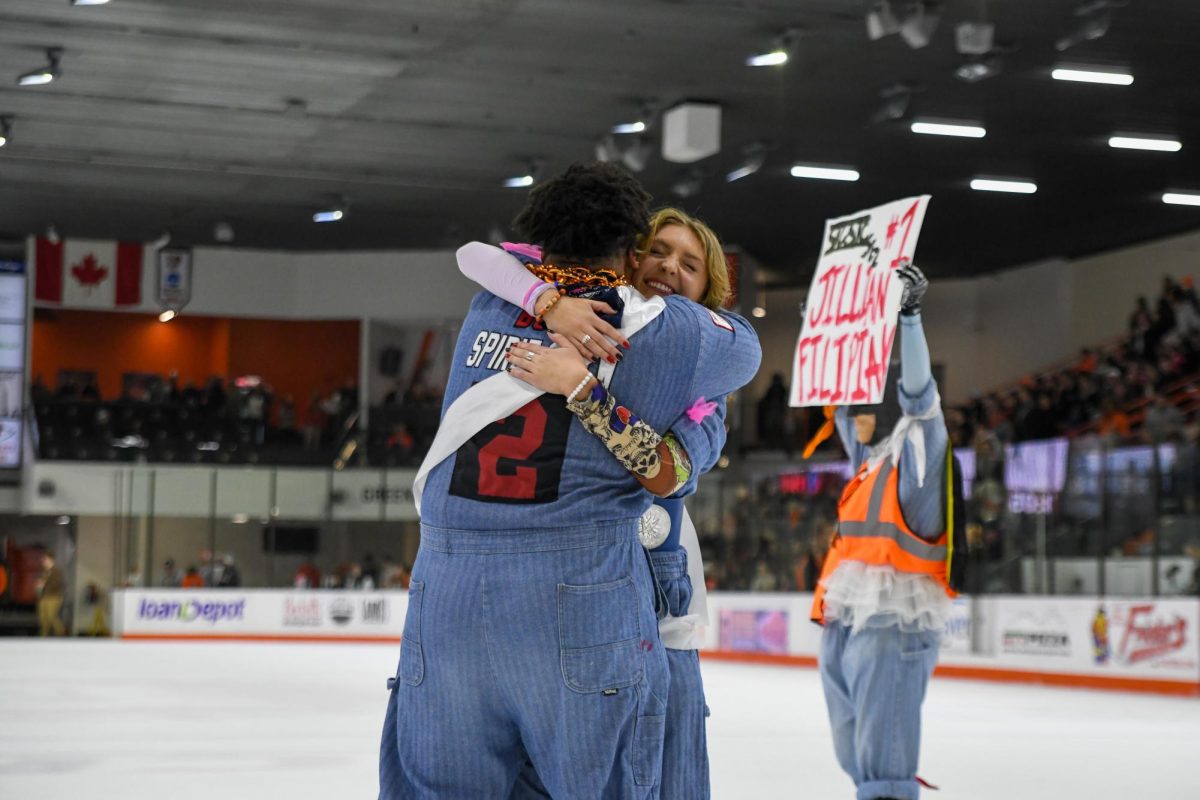This being my first year participating in Dance Marathon, I was prepared for, well, nothing.
My first taste of the event’s craziness came when I saw an 11-year-old boy bust a move in a wheelchair. But there was more to come — whether I liked it or not.
When I first saw the crowd gathering to watch the boy, I thought it couldn’t be possible. The boy, Nathan Watt, proved me wrong as he dazzled on-lookers Saturday night in the Student Recreation Center with wheelies and spins.
Though in a wheelchair, he wasn’t content to dance sitting down. As “U Can’t Touch This” began playing, he hopped to the floor and started break dancing. Hammer himself would be jealous.
He does this all despite being diagnosed with spina bifida, a condition caused when the spine doesn’t close correctly during the first month of pregnancy, according to the Spina Bifida Association of America. In a display of determination — a trait embodied by many of the ill children receiving support from the fundraiser — Nathan also wanted to remain awake through the entire 32-hour event like so many supporting him did this weekend. His parents, however, wanted him to get some sleep. After hearing horror stories of perfectly healthy adults using their Sunday morning breakfast trays as pillows, I questioned my own ability to go the distance, so how could he have such confidence? I found it odd that someone so young with such a serious disease could so easily toss themselves into situations where most people might not consider him capable.
Nathan’s case was but one to remind me that those helped by Dance Marathon, often called Miracle Children, aren’t too different from your average, fun-loving kids. They aren’t just statistics from St. Vincent’s Mercy Children’s Hospital in Toledo, where they are treated.
Meeting them showed me why. When I first talked to the child sponsored by my organization, his introduction was a bit less than formal. Instead of shaking my hand, the 4-year-old boy opted to shoot me with a Nerf dart gun. It reminded me of something I might’ve done at his age, which is probably why a later coerced him into use his squirt gun on Freddie Falcon. Yes, I live vicariously through 4-year-olds.
I couldn’t help learn a few lessons from what I saw. But that’s not enough.
You’ve also got to learn what it’s like to stay on your feet for 32 hours straight. And once you’re engulfed in that journey, your brain won’t be capable of learning much else. Anyone who has gone without sleep for 72 hours can be declared clinically insane. Dance Marathon gets you nearly halfway there.
By 5 a.m. Sunday, my mind went to efficiency mode, cutting non-vital functions like “reasoning” and “short-term memory.” How did I know my mind was fried? After deciding to name my very own dance step “The Earth Slap,” I had a hankering to do The Electric Slide. Neither of these are logical thoughts.
A few of my fellow dancers talked about getting a second wind lasting from Sunday afternoon until the balloons fell from the ceiling during the finale. Physically, I did recover quickly. Mentally, however, that second wind blew right in my face. As of press time, I still haven’t recovered, which may explain any oddities or errors in this article.
Though the struggle was hard on the head and feet, its effects on the lives of others last much longer. Dancing for a weekend also isn’t a bad way to raise funds. It beats fast food. Or any real job, for that matter.







